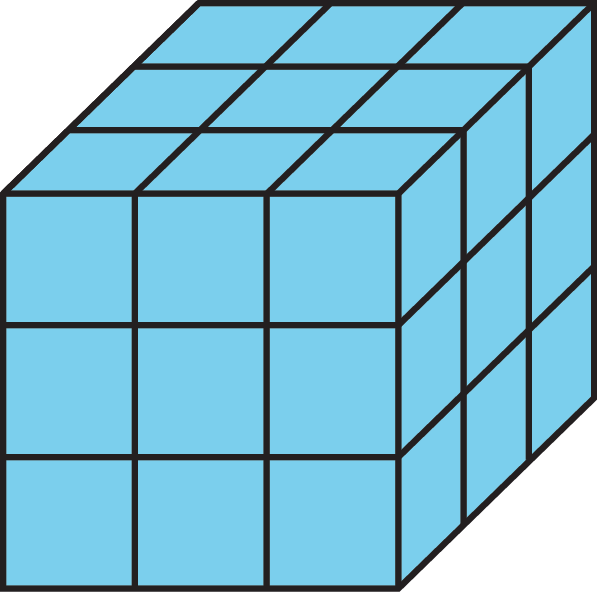When we multiply two of the same numbers together, such as 5\boldcdot 5, we say we are squaring the number. We can write it like this: 5^2Because 5\boldcdot 5 = 25, we write 5^2 = 25 and we say, “5 squared is 25.”
When we multiply three of the same numbers together, such as 4\boldcdot 4 \boldcdot 4, we say we are cubing the number. We can write it like this: 4^3Because 4\boldcdot 4\boldcdot 4 = 64, we write 4^3 = 64 and we say, “4 cubed is 64.”
We also use this notation for square and cubic units.
- A square with side length 5 inches has area 25 in2.
- A cube with edge length 4 cm has volume 64 cm3.
To read 25 in2, we say “25 square inches,” just like before.
The area of a square with side length 7 kilometers is 7^2 km2. The volume of a cube with edge length 2 millimeters is 2^3 mm3.
In general, the area of a square with side length s is s^2, and the volume of a cube with edge length s is s^3.

